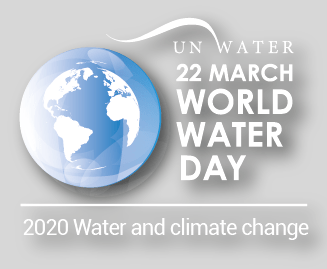
World Water Day is an unofficial holiday that is observed every year. It was originally created by the United Nations in 1992, and the first World Water Day was celebrated in 1993. World Water Day falls on the 22nd of March each year. The purpose of observing this day is to bring awareness to the issues that are caused by a shortage of water and to raise awareness about what we can do to conserve and protect our water resources.
The theme for World Water Day 2020
This year, World Water Day will address one of the biggest threats to water: climate change. Approximately 71 percent of the planet is water, and the vast majority of that, more than 95 percent, is in the oceans. That leaves only a small portion of water that is drinkable and can be used in industry and food production. Climate change has already and will continue to impact water supplies, and that means that important industries such as manufacturing, agriculture, wineries, beverage industries, and commercial fishing will all be dramatically affected by the decrease in viable water.
How will a water crisis affect everyday life?
Everything you touch is affected by water. Did you know that paper product manufacturing is one of the largest consumers of water? It takes approximately 17,000 gallons of water to produce one ton of paper. Clean and safe water is essential to manufacturing and agricultural production, and these industries are crucial to maintaining the standard of living that many countries have grown accustomed to. However, many other industries use an exorbitant amount of water during production, including the textile and garment industry, automotive manufacturing, and energy generation. A water crisis will negatively impact so many facets of modern life, and the threat of a water shortage means a decrease in food supplies and clean water.
What action can you take to effect change?
Keeping all of this in mind, we can each do our part to help conserve water and reduce waste. Just changing small habits that we have become accustomed to is one of the best ways to help conserve water. Consider recycling glass, plastic, and paper products. Try to reuse what you can or extend the life of your clothing or shoes when possible. If you do have to dispose of clothing, make sure you donate them rather than throwing them in the trash. Fast fashion has a negative effect on the environment. Try to carpool or take public transportation when possible. You can also bring attention to water shortages on social media, donate to organizations that fight climate change, and organize events in your area to raise awareness of the water crisis that the world is facing.



